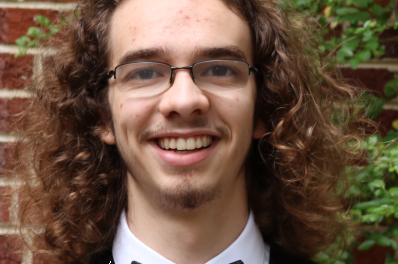Triangle Youth at Play
by Elizabeth and Joe Kahn
Raleigh, Meymandi Concert Hall, May 2 & 4 : It’s always so much fun to listen to the three stair-step youth orchestras of the Philharmonic Association. Even though the personnel is different in each group, it feels as if you’re watching a single musical entity mature in the space of a few hours. The Triangle Youth Orchestra (TYO), populated by middle school and a good number of elementary school talent, playing on student-sized instruments, perform classics specifically arranged to teach them intonation, rhythm, articulation, dynamics, counting – full and empty measures – and watching the conductor. We stress this point because it is easy to discount the difficulty of acquiring this complex of skills when listening to “simplified” arrangements.
The next step up is the Triangle Youth Symphony (TYS), which draws its talent from high schools all over the area. These young musicians play the real stuff and have all clearly put in several years of private lessons and school ensemble training in order to make the cut. In a sense, the kids of the Symphony play second fiddle to the premiere group, the Triangle Youth Philharmonic (TYP), some members of which plan careers in music. But the Symphony players are a special breed, teenagers who have chosen to make classical music their recreation of choice in a world that values lesser options.
The TYO and TYS shared the program on May 4. The TYO, under the leadership of their conductor Andrew McAfee and associate conductor Jeremy Gibbs, led off with simplified and shortened arrangements of the Overture to The Marriage of Figaro and “The Sorcerer’s Apprentice,” both of which suffered more because of the choppy quality of the arrangements and cuts rather than the playing. TYO is violin heavy, largely because most children are too small to start playing woodwinds and brass instruments early enough to make it into this young ensemble. The students really got to show what they could do in much better arrangements of Vivaldi’s “L’inverno” from The Four Seasons (all three movements) and Tchaikovsky’s “March Slave.”
The TYS program was, we felt, particularly difficult and might have shown the group to better advantage had it been shortened to four instead of five pieces. Conducted by Tony Robinson, the orchestra led off with Shostakovich’s Festive Overture, in which the woodwinds gave a particularly fine performance of the work’s fast fingerwork. Associate conductor Marta Findlay-Partridge then led the group in Sibelius’s Andante Festivo, a more relaxed work. Von Suppé’s Poet and Peasant Overture was the highlight of the program, despite a too slow start that made things difficult for the brass to stay together – it’s easier to play fast than slow. This work is particularly good at training ensembles in rapid tempo changes, and the kids followed Partridge well.
Ravel’s “Pavane pour une infante defunte” again seemed to let the kids relax a bit, but the long phrases are difficult to shape, and the players needed to be drilled in tapering off cadence tones instead of just stopping. The finale to Tchaikovsky’s Symphony No. 4 in f minor concluded the concert. Considering the precision of the Shostakovich and von Suppé, we sensed that the kids were just worn out by the time they got to the rapid runs con fuoco.
Two days earlier, on May 2, The Triangle Youth Philharmonic performed a challenging program, even by adult standards, including Robert Ward’s Second Symphonic Set from Lady Kate, Sibelius’s Symphony No. 2 and the first movement of Haydn’s Cello Concerto in D Major with April Dannelly, a member of the cello section, as soloist.
The Ward composition is light-hearted and sounds easy, but isn’t, especially for the brass. Guest conductor Alfred Sturgis, Music Director of the North Carolina Master Chorale and Principal Conductor of the Carolina Ballet, used hand motions and body language to shape the phrases and bring out the humor in the music. Ward, who sat behind us, gave the performance an enthusiastic thumbs up.
As with the Ward, Haydn’s music also sounds easy but can be very challenging, and never more so than in the D Major Cello Concerto. Dannelly had a good feel for the music but had intonation problems, particularly in the upper register. Her decision to tackle all the original ornamentation was most likely the main source of the intonation difficulties since she performed musically and in tune in the more expressive, legato passages. Conductor Hugh Partridge, Artistic Director of the Philharmonic Association, kept a good balance between soloist and orchestra.
Sibelius’s Symphony No.2, with its long musical lines, rapid tempi and meter changes and complex rhythms, is a challenge even to a professional ensemble. The Youth Philharmonic distinguished itself, especially the woodwinds and brass. You would expect some flagging towards the end of this 40+ minute work, but not so. The glorious finale was crisp, and Partridge gradually built up the dynamics to an exciting finish.
As one might expect, Meymandi Hall was filled with doting parents and grandparents, and surprisingly well-behaved siblings for all three performances, but anyone would be heartened to hear them. These kids represent the future of classical music as an integral part of the community.











